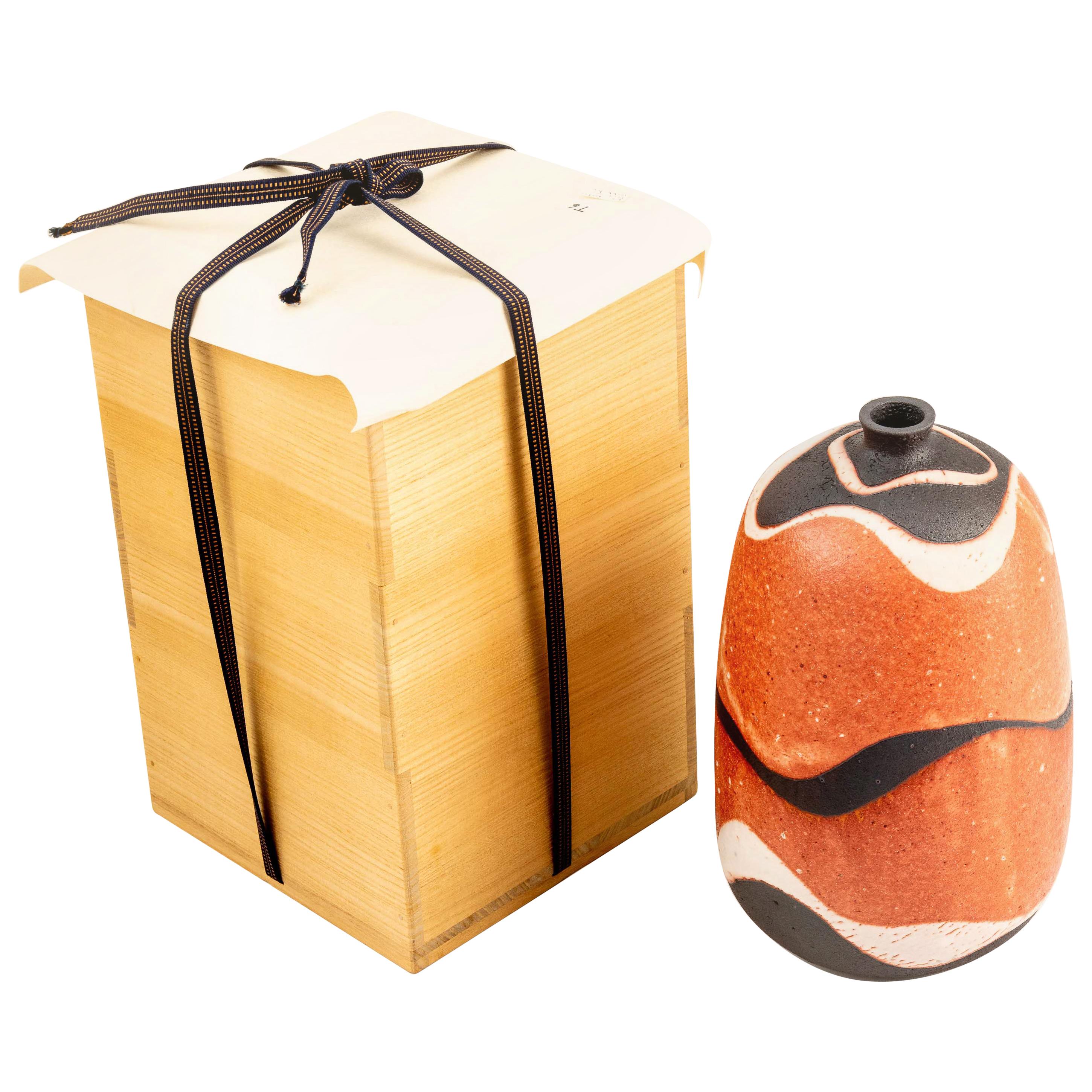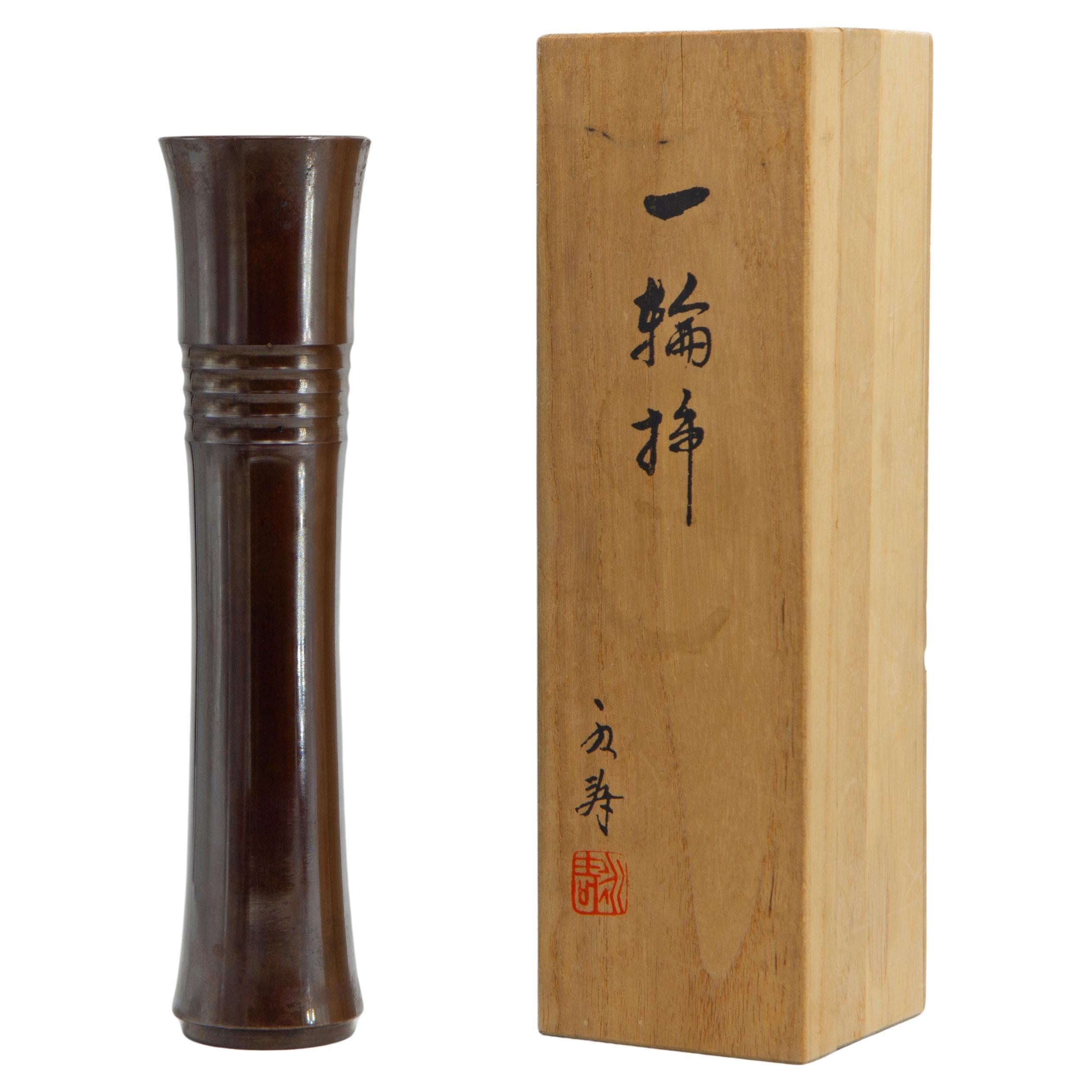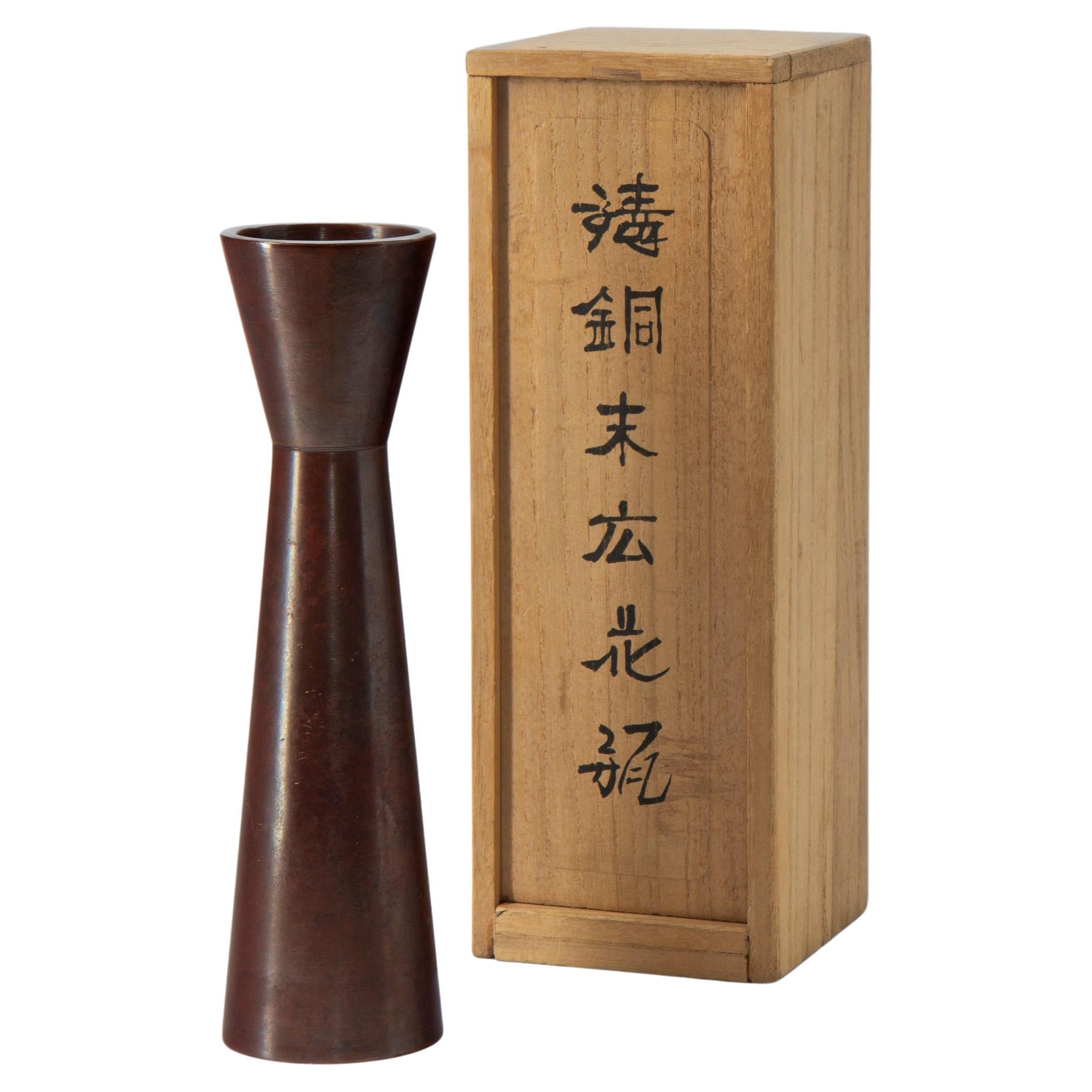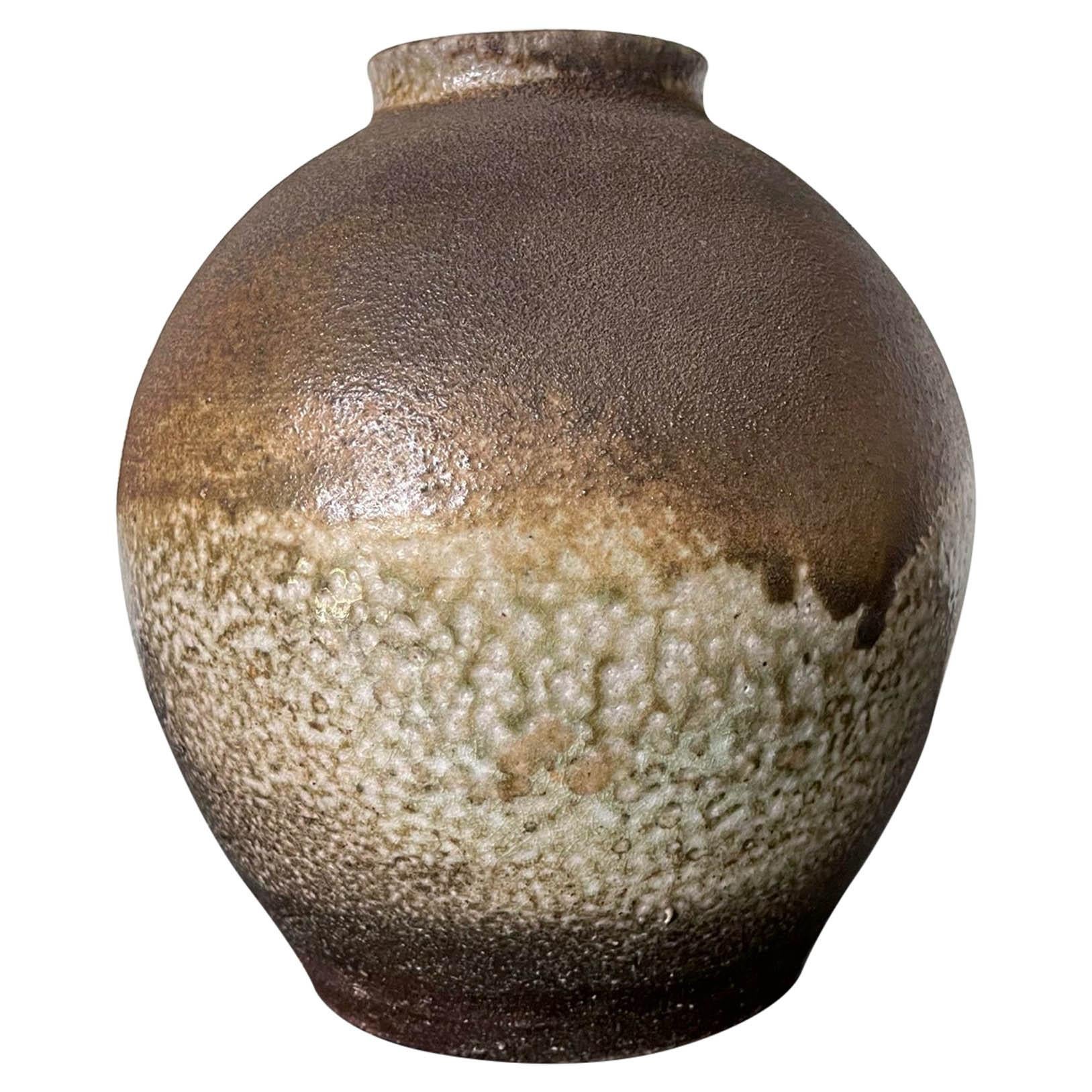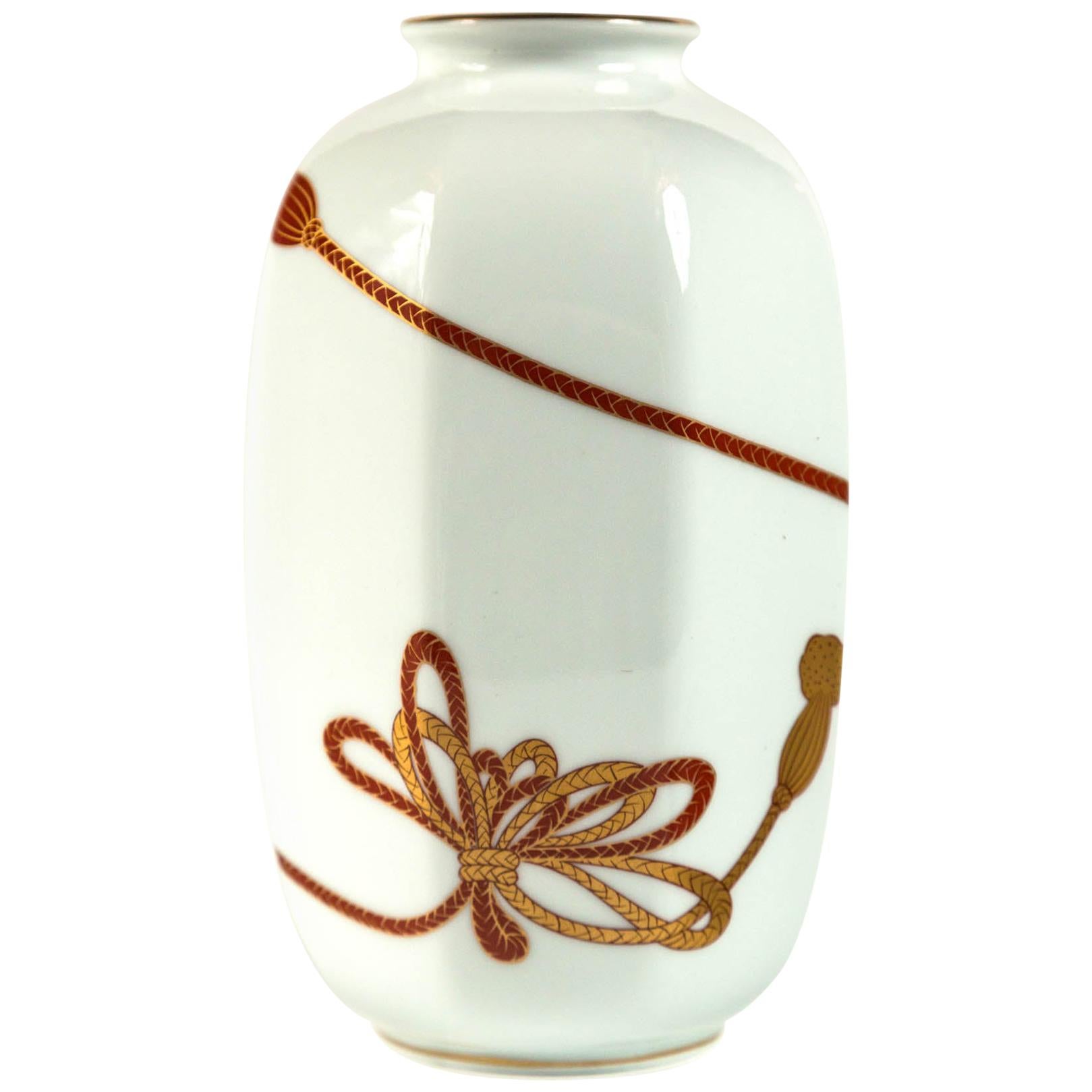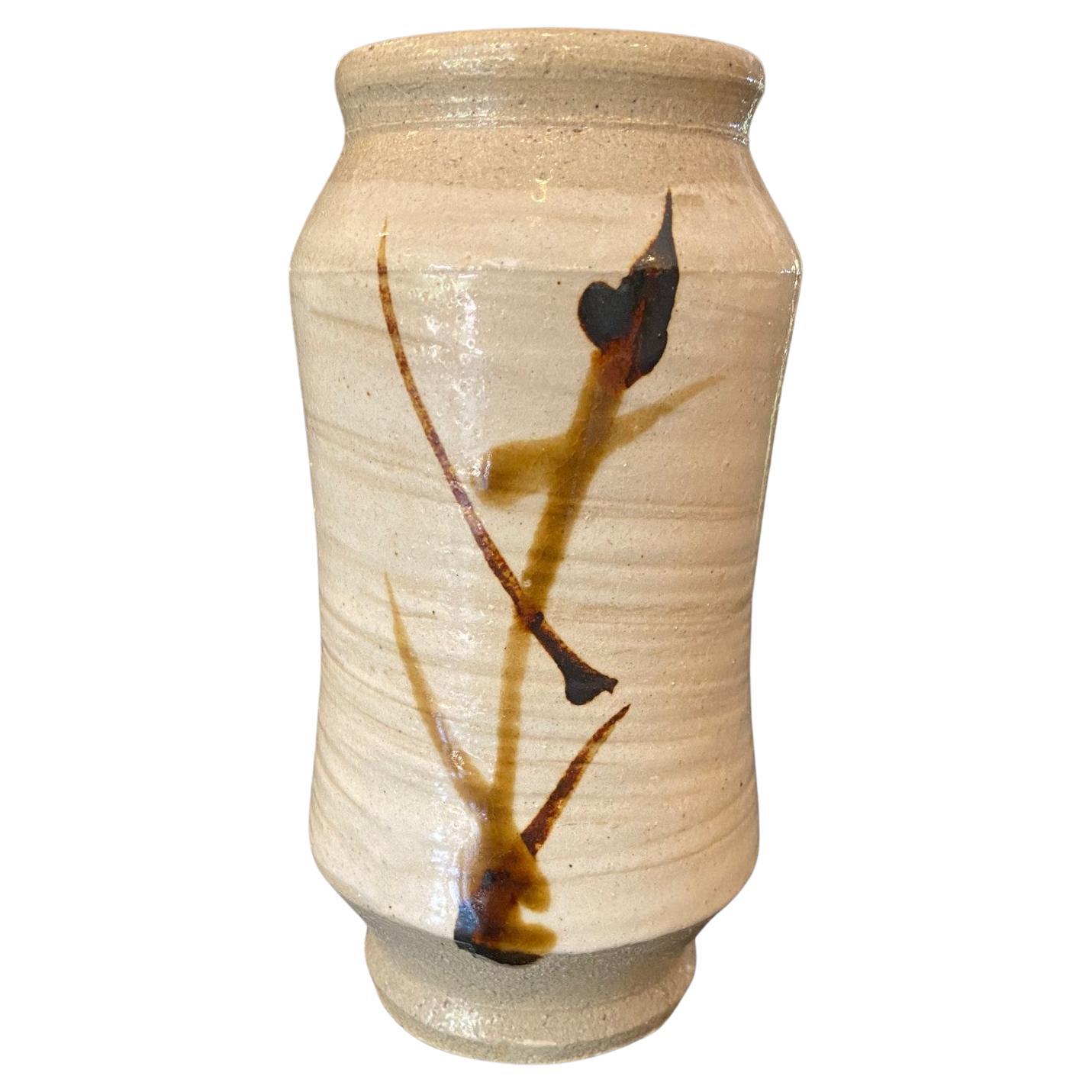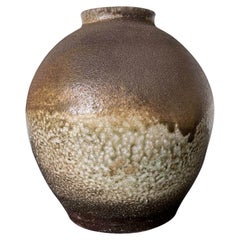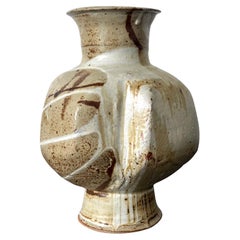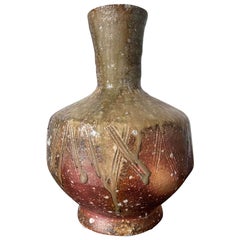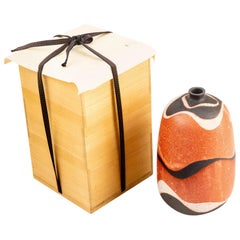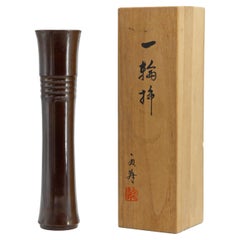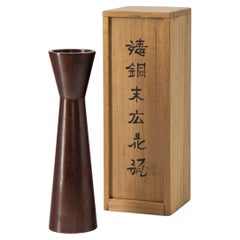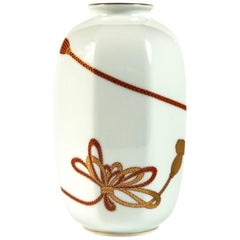Items Similar to Hagi Ikebana Vase by Kyusetsu Miwa X Japanese Studio Pottery
Want more images or videos?
Request additional images or videos from the seller
1 of 19
Hagi Ikebana Vase by Kyusetsu Miwa X Japanese Studio Pottery
$4,000
£3,037.29
€3,473.37
CA$5,588.58
A$6,215.72
CHF 3,245.66
MX$75,638.71
NOK 41,451.98
SEK 38,874.65
DKK 25,923.12
Shipping
Retrieving quote...The 1stDibs Promise:
Authenticity Guarantee,
Money-Back Guarantee,
24-Hour Cancellation
About the Item
A stoneware vase with white dripping glaze from Hagi by Kyusetsu Miwa X (1895-1981), Showa Period. The vase is in the shape of "Double Gourd" with a bulbous body and a slightly flared lip. The body displays a reddish clay with the top part covered in a free dripping creamy white glaze. It is used as ikebana for flower display during tea ceremony and comes with its original storage box tomobako with inscription of the title, the artist's signature and seal. The vase is also press signed on the base. The vase display beautiful surface with glaze, some kiln burst and crackle as well, adding a wabi-sabi character to the piece. The size shown is the vase; The size of the box is 11.625hx6.25wx6.25d.
Kyusetsu Miwa X was given the honor of Living National Treasure in Japan in 1970 for his work on reviving traditional Hagi ware. The below except is a history of Miwa family from an article written by Robert Yellin published in The Japan Times in 2003.
"The Miwa family is one of the most important potting families in all of Japan. Their kiln was established in Kanbun 3 (1663) in the Matsumoto area of Hagi (in Yamaguchi Prefecture on the Sea of Japan coast) in order to produce tea utensils for Lord Mori Terumoto. The successive generations of Miwa potters have produced all sorts of works besides tea ware, including Raku ware (Kyusetsu I and IV studied in Kyoto), figurines of mythical creatures (Kyusetsu VI and VII), and vessels for the table.
In the 1930s, when there was a “Return to Momoyama” revival (the Way of Tea was crystallized in the Momoyama Period, 1573-1615), Miwa Kyuwa (Kyusetsu X) revitalized the Hagi tea world with his warm and sensuous chawan and other tea utensils, while his younger brother Miwa Jusetsu (Kyusetsu XI) added power and strength with his Oni-Hagi (devil-Hagi) chawan (see this column, Jan. 22, 2000). The brothers were named as living national treasures for their Hagi wares in 1970 and 1983, respectively."
- Creator:Kyusetsu Miwa X (Artist)
- Dimensions:Height: 10.45 in (26.55 cm)Diameter: 5.2 in (13.21 cm)
- Style:Japonisme (Of the Period)
- Materials and Techniques:
- Place of Origin:
- Period:
- Date of Manufacture:1940s-1950s
- Condition:Wear consistent with age and use. Some wear on the storage box, kiln wear on the base, kiln character like burst and crackle as shown.
- Seller Location:Atlanta, GA
- Reference Number:1stDibs: LU945015545141
About the Seller
4.9
Platinum Seller
Premium sellers with a 4.7+ rating and 24-hour response times
Established in 2006
1stDibs seller since 2010
564 sales on 1stDibs
Typical response time: <1 hour
- ShippingRetrieving quote...Shipping from: Atlanta, GA
- Return Policy
Authenticity Guarantee
In the unlikely event there’s an issue with an item’s authenticity, contact us within 1 year for a full refund. DetailsMoney-Back Guarantee
If your item is not as described, is damaged in transit, or does not arrive, contact us within 7 days for a full refund. Details24-Hour Cancellation
You have a 24-hour grace period in which to reconsider your purchase, with no questions asked.Vetted Professional Sellers
Our world-class sellers must adhere to strict standards for service and quality, maintaining the integrity of our listings.Price-Match Guarantee
If you find that a seller listed the same item for a lower price elsewhere, we’ll match it.Trusted Global Delivery
Our best-in-class carrier network provides specialized shipping options worldwide, including custom delivery.More From This Seller
View AllJapanese Shigaraki Jar for Ikebana by Shiho Kanzaki
By Shiho Kanzaki
Located in Atlanta, GA
A Shigaraki stoneware jar by Japanese potter Shino Kanzaki (1942-2018). Kanzaki is a world renowned potter in Shigaraki who based his modern work on the ancient tradition of Shigaraki and Iga ware...
Category
20th Century Japanese Modern Ceramics
Materials
Ceramic
Ceramic Vase with Bespoken Glaze by Makoto Yabe
By Makoto Yabe
Located in Atlanta, GA
Made by Japanese ceramic artist Makoto Yabe (1947-2005), this stoneware vase features a globular body supported by a round pedestal foot. A similarly shaped neck extends to a rimmed mouth opening. Robust in form with thick wall, the vase is noted for its irregular cloved form. The surface is covered in a beige-yellow glaze, on top of which, dark brown strokes and thick white feldspar slip were artistically applied in a splashed and washed pattern. Together with some random shallow incision lines, they form an abstract painting with textured surface where some slip forms small droplets at the end of the stroke. The work was created in traditional Japanese manner and reflects the beauty of Wabi Sabi, a Zen aesthetic for the imperfect perfection.
The base was incised with the artist's cipher.
"Makoto Yabe's work beautifully exemplifies the transmission of Japanese ceramics to the West. Born in Fukushima, Japan, Yabe began studying ceramics in Kyoto at the age of nine. He completed his training at the age of 24, with a four-year apprenticeship under Jinmatsu Uno and Sango Uno. Yabe then came to Boston, where he was an integral member of the local ceramic community, yet he maintained his Japanese roots. As an instructor of ceramics, Yabe worked in the Boston area at numerous schools and universities, touching the lives of all his students and expanding their knowledge and appreciation of studio ceramics."
Biography sited from Pucker Gallery...
Category
Late 20th Century American Organic Modern Ceramics
Materials
Ceramic, Stoneware
Japanese Ceramic Vase Mingei Style Hamada Shoji
By Hamada Shoji
Located in Atlanta, GA
A heavily potted stoneware vase in cylindrical form, decorated with abstract strokes in iron rust glaze (known as Persimmon Glaze in Japanese) on a black glazed background. The pattern suggests autumn grasses, and it was applied with free hands. The vase is attributed to Japanese potter Hamada Shoji...
Category
Late 20th Century Japanese Arts and Crafts Ceramics
Materials
Ceramic
Modern Japanese Ceramic Shigaraki Ikebana Vase Takahashi Shunsai
Located in Atlanta, GA
A tall ceramic vase made in the tradition of Shigaraki ware by Japanese potter Takahashi Shunsai (1927-2011), the fourth heir of the famed Rakusai lineage of potters. The vase is heavily potted in the reddish sandy Shigaraki clay. It has a Classic vase form made for Ikebana display. The surface is thickly draped with natural ash glaze that deposited onto the body during the firing process in the kiln. It also features decoration of carved lines. Nuggets of feldspar were incorporated in the clay and exposed onto the surface as crystal like jewels. Substantial and archaic looking, the vase also has a strong modern appeal due to its Mingei styling. It was signed on the base with a pressed seal Shunsai as shown. The vase comes with its original wood storage box (tomobako) with bears the title and signature in Kanji and a seal. It also retains a paperwork noting the artist's biography and practice philosophy in Japanese.
Born in Shigaraki, Shunsai was the second son of renowned potter Takahashi Rakusai...
Category
1990s Japanese Modern Ceramics
Materials
Ceramic
Japanese Satsuma Vase Yabu Meizan Meiji
By Yabu Meizan
Located in Atlanta, GA
A Satsuma baluster form vase from the studio of Yabu Meizan (birth name Yabu Masashichi; 1853-1934), who is one of the most celebrated and collectible Satsuma artists from Meiji Peri...
Category
Early 20th Century Japanese Meiji Ceramics
Materials
Ceramic
Japanese Ceramic Vase with Delicate Carvings by Makuzu Kozan Meiji Period
By Makuzu Kozan
Located in Atlanta, GA
A delicate and rare Japanese ceramic vase by the important Meiji imperial potter Makuzu Kozan (1842-1916) circa 1887-1910. Dated to his underglaze phase post 1887 after he successful...
Category
Antique 1890s Japanese Japonisme Ceramics
Materials
Ceramic
You May Also Like
Exceptional Japanese Shino Pottery Vase by Tamaoki Yasuo
By Tamaoki Yasuo
Located in Prahran, Victoria
Shino pottery vase in deep murasaki and white by contemporary Japanese ceramic artist Tamaoki Yasuo. The vase is an iconic representation of his style. I...
Category
20th Century Japanese Ceramics
Materials
Ceramic
Tsuda Eiju Showa Period Bronze Vase
Located in Norwich, GB
Japanese bronze vase by Tsuda Eiju (1915-2001) Showa period - Circa 1960.
The vase having a tall cylindrical body and four horizontal ribs, the base cast w...
Category
Mid-20th Century Japanese Showa Vases
Materials
Bronze
Nakajima Yasumi II Showa Period Bronze Vase
By Nakajima Yasumi II
Located in Norwich, GB
Bronze vase by Nakajima Yasumi II (1905-1986), Showa period, Circa 1960-70.
Patinated dark reddish brown, the vase has a slender waisted shape. The base cast with a seal-style signature, along with the inscribed Tomobako (Paulownia) wood storage box.
In good condition, the vase shows some rubbing with handling and there is a small area of very minor marks. Please refer to the last photograph. The storage box is in very good condition.
Born in Osaka, the eldest son of the well-known metal artist Nakajima Yasumi I, Yasumi II graduated from the Sendai National Crafting Academy in 1932.
In 1933 he exhibited for the first time at the Export Crafts Exhibition, and went on to show his work several times outside Japan at the Grande Salon de Paris...
Category
Mid-20th Century Japanese Showa Vases
Materials
Bronze
Aritaware Porcelain Vase, Fukagawa, Japan, 20th Century
By Fukagawa
Located in Chappaqua, NY
Aritaware porcelain vase, Fukagawa, Japan, 20th century. Octagonal shaped vase. Graphic wrapped tassel design in gold and deep red on white ground.
Category
Late 20th Century Japanese Japonisme Porcelain
Materials
Porcelain
Shoji Hamada Japanese Pottery Mingei Bamboo Tetsue Hakeme Vase with Signed Box
By Shoji Hamada
Located in Studio City, CA
An exquisite, beautifully crafted and designed vase by master Japanese Mingei Moshiko potter Shoji Hamada, a fine example of his iron pigment and glazed hand painted tetsue brushwork...
Category
Mid-20th Century Japanese Showa Ceramics
Materials
Pottery, Stoneware
Japanese Sumida Gawa ceramic vase
By Sumida Gawa
Located in Autonomous City Buenos Aires, CABA
Sumida Gawa Japanese ceramic vase
Sumida Gawa Japanese ceramic vase decorated in relief with three ladies, two of whom are servants, with a lattice in the centre and an iridescent ef...
Category
20th Century Japanese Japonisme Vases
Materials
Ceramic
More Ways To Browse
Kiln Japanese
Vintage 1940s Japanese
Japanese Raku Ceramics
Signed Japanese Pottery
Japanese Studio Pottery
Ikebana Vase
Japanese Crackle
Studio Pottery Pot
Japanese Living Treasure
1970 Studio Art Pottery
1970 Japanese Vases
Japanese Ceramic Pot
Japan Tea Box
Figurines Japan
Japanese Tea Ceremony Ceramics
Asian Ceramic Pots
Kyoto Vase
Vintage Asian Figurines
